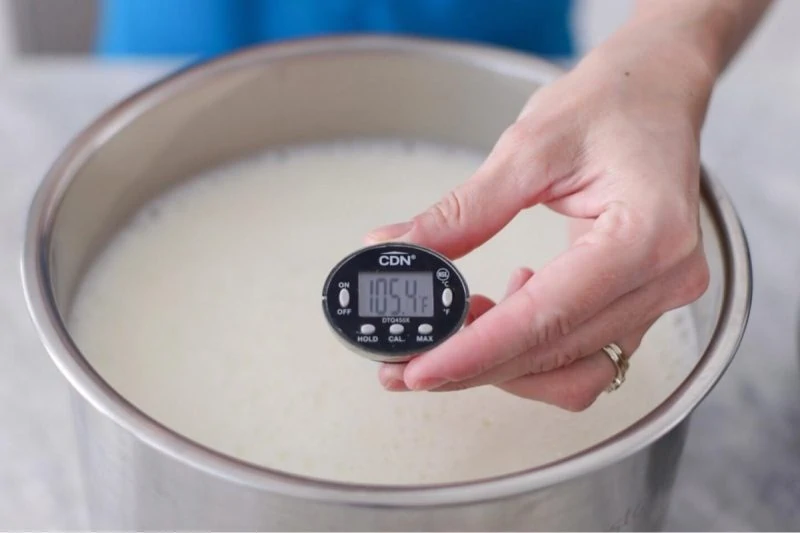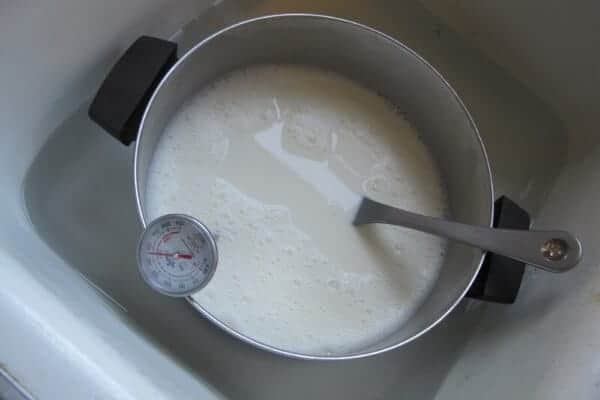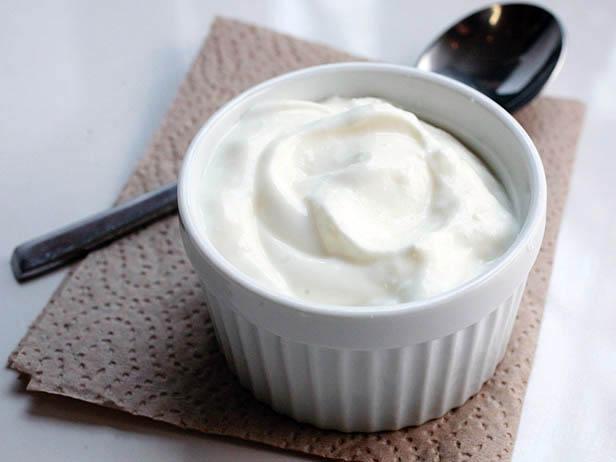
Making your own dairy-free yogurt at home is not only easy but also incredibly satisfying. If you're avoiding dairy for dietary reasons, following a vegan lifestyle, or simply seeking a healthier alternative, homemade dairy-free yogurt offers full control over ingredients and flavor.
Best of all, it's completely customizable. In this article, we'll walk you through the process of making creamy, tangy dairy-free yogurt in a crockpot. Once you try it, you'll never go back to store-bought options.
Why Make Dairy-Free Yogurt At Home?
Making your own dairy-free yogurt comes with several benefits that go beyond just taste:
- Control Over Ingredients: You choose what goes into your yogurt, ensuring it’s free from additives and preservatives found in store-bought versions.
- Cost-Effective: Homemade yogurt is much cheaper than buying dairy-free alternatives, especially when you use homemade plant-based milk.
- Healthier: Homemade yogurt is free from added sugars and can be made with high-quality non-dairy milk, offering probiotics and gut health benefits.
- Customization: You can adjust the flavor, thickness, and sweetness to match your exact taste preferences.
If you have lactose intolerance, follow a vegan diet, or want to cut down on dairy, homemade dairy-free yogurt is a great choice. Plus, it’s rich in probiotic-rich foodsthat promote gut health, making it an excellent addition to any diet.
Ingredients Needed For Dairy-Free Yogurt
To get started, gather the following ingredients. This simple recipe requires just a few basics:
- Non-Dairy Milk: Coconut milk, almond milk, soy milk, or cashew milk. For the creamiest texture, coconut milkworks best, but feel free to experiment with other options.
- Thickener: To ensure your yogurt is creamy and thick, use cornstarch, agar-agar, or tapioca starch.
- Probiotics: Either store-bought dairy-free yogurt(1 tablespoon) or probiotic capsules/powder (4 capsules or 1 teaspoon).
- Sweetener(Optional): Maple syrup, honey, or agave to help with fermentation and enhance flavor.
- Flavor Add-ins: Vanilla extract, fruit purees, or spices like cinnamon are excellent for enhancing the flavor of your yogurt once it has set. Experimenting with homemade spice blendscan create unique and personalized flavors, making each batch of yogurt distinctly your own.
How To Prepare
Follow these steps to make your own homemade dairy-free yogurt. The process is simple and requires only a bit of patience for perfect results.

How To Make Dairy-Free Yogurt At Home (Easy and Healthy)
Step 1: Heat The Milk
- Pour 4 cupsof your chosen non-dairy milkinto a large saucepan.
- Add 2 tablespoons of cornstarch (or your thickener of choice) and whisk thoroughly to avoid clumps.
- Heat the milk over medium heat, stirring constantly until it reaches 180°F. Don’t let it boil just bring it up slowly to avoid burning the milk.
Step 2: Cool The Milk
- Once the milk reaches 180°F, remove it from the heat and allow it to cool to around 90-100°F. This cooling period usually takes 1-2 hours. Stir occasionally to speed up the process.
- While cooling, set aside 1 tablespoon of store-bought yogurt or 2-3 tablespoons from your previous batch of homemade yogurt. Let it come to room temperature.
Step 3: Add Probiotics And Sweetener
- Once the milk has cooled to the desired temperature, whisk in your probiotics (or store-bought yogurt) and optional sweetener.
- Stir gently to ensure the probiotics are evenly distributed throughout the milk.
Step 4: Incubate The Yogurt
- Pour the milk mixture into a glass jar or mason jar. Loosely cover with a lid (don’t tighten it completely).
- Wrap the jar in a towel and place it in your crockpot set to low. Turn off the crockpot and wrap the whole appliance in a large towel to keep the warmth inside.
- Let the yogurt incubate for 12-18 hours. The longer you incubate it, the thicker and sourer it will become. Start checking at 12 hours if it’s not tangy enough, let it sit longer.
Step 5: Refrigerate And Enjoy
- Once the yogurt has incubated to your liking, transfer it to the fridge for 4-6 hours to set further.
- Your homemade dairy-free yogurt is now ready to enjoy!
Tips For Perfecting Your Dairy-Free Yogurt
Here are a few tips to ensure your homemade yogurt turns out just right:
- Longer Incubation Time: The longer you leave it, the thicker and tangier your yogurt will become. If you prefer a milder flavor, check it at 12 hours.
- Full-Fat Non-Dairy Milk: For the creamiest, thickest yogurt, use full-fat coconut milk. Lighter milks (like almond or rice) produce thinner yogurt.
- Straining for Thickness: If you want your yogurt thicker, strain it through a cheesecloth or fine mesh strainer to remove excess liquid.
Dairy-Free Yogurt Variations And Flavor Ideas
Once you’ve mastered the basics, try these fun variations to customize your yogurt:
- Fruit-Flavored Yogurt: Add fruit preserves, fresh berries, or fruit puree after the yogurt has set. Try strawberry, blueberry, or mango for a refreshing twist.
- Vanilla Yogurt: Stir in vanilla extractand a little sweetener for a classic flavor.
- Chocolate Yogurt: Blend in cocoa powder or melted dairy-free chocolate for a rich treat.
- Greek-Style Yogurt: To make thicker yogurt, strain out the excess liquid. This works particularly well for a Greek-style yogurt texture.
Health Benefits Of Dairy-Free Yogurt
Dairy-free yogurt is not only a great alternative for those avoiding dairy, but it also offers a variety of health benefits that contribute to overall wellness. Made from plant-based milks like coconut, almond, or soy, dairy-free yogurt can be a rich source of essential nutrients and probiotics. Here are some of the key health benefits:
1. Promotes Gut Health With Probiotics
One of the most significant benefits of dairy-free yogurt is its probiotic content. Probiotics are live bacteria that support a healthy gut microbiome, which is essential for digestion and immune function. These beneficial bacteria help balance the gut flora, which can improve digestion, reduce bloating, and prevent gastrointestinal issues like constipation and diarrhea.
Probiotics in dairy-free yogurt also aid in nutrient absorption, which can boost overall health. Consuming probiotics regularly has been shown to improve intestinal health and may even support mental health by reducing symptoms of anxiety and depression through the gut-brain connection.
2. Lactose-Free And Easier To Digest
Dairy-free yogurt is naturally lactose-free, making it an excellent choice for those with lactose intolerance or sensitivity to dairy products. By avoiding dairy, individuals who experience digestive discomfort from milk can enjoy a creamy, tasty alternative without the associated symptoms, such as bloating, cramps, and gas.
Furthermore, many plant-based milks are easier to digest than dairy milk, providing a lighter option for people with sensitive digestive systems.
3. Rich In Plant-Based Nutrients
Dairy-free yogurt is often made from nutrient-rich plant-based milks like coconut, almond, soy, and cashew, each of which offers unique health benefits:
- Coconut milkis high in medium-chain triglycerides (MCTs), which are healthy fats that may boost metabolism and support weight management.
- Almond milkis rich in vitamin E, an antioxidant that protects cells from damage and supports healthy skin.
- Soy milkcontains isoflavones, which may support heart health by reducing cholesterol levels and boosting bone strength.
These plant-based milks provide essential vitamins and minerals, such as calcium, magnesium, and vitamin D, that help support bone health, muscle function, and immune system strength.
4. Lower In Calories And Sugar
Many dairy-free yogurts are lower in calories and sugar compared to traditional dairy yogurt. Plant-based yogurt made from unsweetened almond, coconut, or cashew milk often contains fewer calories, making it an excellent choice for those looking to manage their weight.
Additionally, many dairy-free yogurts are naturally lower in sugar, especially if made from unsweetened milk, offering a healthier alternative for those who are trying to reduce sugar intake or manage blood sugar levels.
5. Supports Heart Health
Plant-based yogurt is often made from unsweetened plant-based milks, which are lower in saturated fat than dairy milk. In addition, plant-based fats, such as those found in coconut and almond milk, are healthier for the heart and may help lower the risk of cardiovascular disease. Many plant-based milks contain monounsaturated fats, which are heart-healthy fats known to help improve cholesterol levels and reduce inflammation.
Some dairy-free yogurts are also fortified with omega-3 fatty acids, which are beneficial for heart health, helping to reduce high blood pressure and inflammation in the body.
6. Supports Bone Health
Many dairy-free yogurts are fortified with calcium and vitamin D, both of which are essential for maintaining strong and healthy bones. These nutrients play a vital role in bone mineral density and preventing osteoporosis, particularly as we age.
Plant-based milks like almond milk and soy milk often contain added calcium to match or exceed the calcium content of dairy milk, providing a great option for those avoiding dairy products.
7. Helps Manage Weight
Dairy-free yogurt can be part of a weight management plan due to its low calorie and fat content. It provides a nutritious, satisfying snack without the excess calories found in some dairy products. The probiotic content in dairy-free yogurt may also support a healthy metabolism by promoting the growth of healthy gut bacteria that help regulate weight.
Additionally, many dairy-free yogurts are naturally high in fiber, especially those made from plant-based milks like almond or cashew, which can help promote satiety and reduce overeating.
8. Good For Skin Health
Dairy-free yogurt, particularly varieties made from coconut milk, can support skin health. The healthy fats in coconut milk, along with the antioxidants in plant-based yogurt, help nourish the skin and keep it hydrated. The vitamin E found in almond milk, for example, plays a key role in maintaining skin elasticity and reducing signs of aging.
FAQs
How Long Does Homemade Dairy-free Yogurt Last?
Homemade dairy-free yogurt will last for 1-2 weeks in the fridge when stored in an airtight container.
Can I Use Any Non-dairy Milk For Yogurt?
Yes! You can use coconut, almond, cashew, soy, or oat milk. Full-fat coconut milk creates the creamiest, thickest yogurt.
Can I Reuse Probiotic Cultures?
Yes! You can use 2-3 tablespoons of your previous batch as a starter for the next one.
How Do I Know When My Yogurt Is Ready?
After 12-18 hours of incubation, your yogurt should have thickened and developed a tangy flavor. If it's too runny, you can strain it to thicken it further.
How Can I Make My Yogurt Thicker?
Try using more thickener, letting it incubate longer, or straining the yogurt after it sets.
Conclusion
Making dairy-free yogurt at home is easy, cost-effective, and healthier than store-bought versions. By choosing your favorite non-dairy milk and using simple ingredients like probiotics and thickeners, you can create creamy, tangy yogurt with just a bit of patience. Experiment with different flavors and textures to find your perfect batch.





